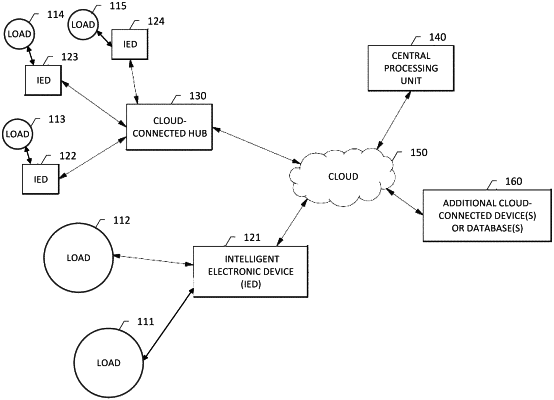| CPC G05F 1/66 (2013.01) [G01R 31/088 (2013.01); G01R 31/12 (2013.01); G05B 13/048 (2013.01); G05B 23/027 (2013.01); H02H 7/20 (2013.01); H02H 9/042 (2013.01)] | 27 Claims |

|
1. A method for reducing/managing energy-related stress in an electrical system, the energy-related stress comprising electrical, thermal and/or mechanical stress on equipment due to at least one energy-related transient on the electrical system, the method comprising:
processing electrical measurement data from or derived from energy-related signals captured by at least one intelligent electronic device, IED, in the electrical system to identify and track at least one energy-related transient in the electrical system;
quantifying an impact of the at least one energy-related transient on equipment in the electrical system, the equipment having an associated stress tolerance to the at least one energy-related transient which produce or lead to electrical, thermal and/or mechanical stress;
generating one or more transient-related alarms in response to the impact of the at least one energy-related transient being near, within or above a predetermined range of the stress tolerance of the equipment;
prioritizing the transient-related alarms based in part on at least one of the stress tolerance of the equipment, the stress associated with one or more transient events, and accumulated energy-related stress on the equipment; and
taking one or more actions in the electrical system in response to the transient-related alarms to reduce energy-related stress on the equipment in the electrical system, wherein the one or more actions are taken based on at least one of the priority and severity of the transient-related alarms.
|